On January 17th The Golf Channel celebrated its 20th birthday. I know these days it’s just Golf Channel but in those days, 20 years ago, the “The” was still part of the name of the network. I was hired in October of 1994, three months before launch and worked there happily and proudly for 18 years. Initially my job was to produce all of the channel’s live domestic tournament coverage but as the number of events airing on TGC added up, that became impossible. So instead of all, I produced most of the events and headed up the production and announcer teams that worked at every one.
My time there was fun; fascinating, frustrating, fulfilling and will forever help define me. Reading reflections over the past month and a little more, from a number of quarters, I figured why not chime in and list the “Top Moments in Golf Channel History” from my perspective, my view from inside the building and inside the truck. So in no particular order, here goes:
THE 1995 HEALTHSOUTH INAUGURAL
The European Tour’s Dubai Desert Classic (won by Fred Couples) is rightly listed as the first tournament televised by the Golf Channel during the week of January 17th, 1995. It aired, in the morning, January 20th – 23rd but it wasn’t the only tournament on the network’s air that week. What isn’t mentioned as often is that The Golf Channel televised a domestic event that week too, The LPGA Healthsouth Inaugural. It was the first tournament produced by a team of Golf Channel hired personnel. Denny Schreiner, Donna Caponi, Kay Cockerill and Peter Kessler were the faces of the telecast and Hall of Fame member Pat Bradley was the champion.
THE ARNOLD PALMER GOLF GALA
In the 90’s the great Arnold Palmer sponsored and participated in a one day, 18 hole, two against two, star studded exhibition at Laurel Valley Country Club benefitting The Arnold Palmer Hospital for Women and Children and various charities in Palmer’s home town of Latrobe, Pennsylvania. In 1997 The Golf Channel was 2 and had just made the move from a pay-per-view service with thousands of viewers to a basic cable offering boosting the viewership by tens of millions. But to reach Joe Gibbs’ and Mr. Palmer’s goal of profitability it still had a long way to go and hundreds of cable outlets still to conquer. Televising The Arnold Palmer Golf Gala that August would go a long way toward making or breaking the network. Palmer invited 1996 British Open Champion Tom Lehman, friend and future PGA Champion Davis Love III and 1997 Masters Champion and phenomenon, 21 year old Tiger Woods. Palmer teamed with Tiger (it WAS his event after all) and they beat Lehman and Love in front of thousands of people in person and many, many more who watched on cable television.
THE DAY THE WORLD “GOT” THEIR BIG BREAK
It was early in 2002 and David Manougian was The Golf Channel’s President. He decided that what the channel needed was an off-site retreat for a few dozen top executives and producers to bond; exchange banter and bounce ideas back and forth. We gathered at a swanky hotel and spent a couple of days discussing what would make Joe Gibbs’ baby better. During one session we broke into groups of 5 or 6 and accepted Manougian’s challenge to “create a show that would anchor an Original Productions Department and help further put The Golf Channel on the map. I think our group came up with a “Hickory Shaft Challenge” that would mirror shows like the old Shell’s Wonderful World of Golf with modern day pros using old equipment. But the gem of the session was the brainchild of a group led by Jay Kossoff who called their show The Big Break. In it average, every day, aspiring golfers would compete in elimination challenges for the opportunity to earn a sponsor’s exemption to a PGA TOUR event. The concept was met with applause in the room and then became a franchise and a ratings bonanza. It was so popular (despite the fact that the sponsor’s exemption ended up being, not to a PGA TOUR event but, to several Canadian Tour events) that during one tournament featuring Big Break I winner Justin Peters, our team (that included PGA TOUR winner Curt Byrum) was out to dinner and while we waited for a table Peters arrived at the same restaurant. While Byrum and our play-by-play announcer Grant Boone sat chatting with Justin, I watched more than a dozen people approach and ask Peters for his autograph completely ignoring the TV guy and the TOUR winner.
TIGER WOODS
The greatest player of all time deserves more than just one memory. I’ll share a few. The first Tiger related story involves the Golf Central newsroom, a hirsute Scott Van Pelt, and a 20 year old Tiger Woods on TV winning his third straight United States Amateur Championship. After the first pumps flew I put my foot in my mouth and bet Van Pelt a hundred bucks that Woods, while a great amateur, would never, ever win on the PGA TOUR. We all know how that turned out.
The second Tiger memory involved our live production team and the opportunity to be the network of record for Tiger’s first PGA TOUR victory. Woods was playing in The Quad City Classic (now The John Deere Classic), just his third PGA TOUR tournament as a pro, and heading into Sunday he held a one shot lead over veteran Ed Fiori. The excitement among our group was palpable but it disappeared quickly when Woods made quadruple bogey 8 on the fourth hole and four putted the seventh hole and made 7 before we came on the air live. Fiori would win, Tiger finished T7 and ESPN, with my friend and mentor Andy Young producing, aired Woods’ first win, in Las Vegas, a few weeks later.
I did get a Tiger Woods win on my resume eventually (actually a week after he won in Vegas). It was our turn to produce the PGA TOUR event as the world’s best came to Orlando and Walt Disney World. This time Tiger didn’t disappoint as he went head to head with 1995 United States Open Champion Payne Stewart shooting 66 on Sunday to win by one. Woods’ 21 under par score was actually tied by a little known pro named Taylor Smith after he birdied the 72nd hole. Smith was subsequently disqualified because he used a putter with split grips that did not conform to USGA specifications. Instead of a playoff it was Tiger’s second win in seven events and gave him $734,794 for the year (good for 23rd on the money list). I’ll never forget Donna Caponi, interviewing Tiger Woods on the 18th green with Mickey and Minnie Mouse looking on.
GOLF’S TOUGHEST TOURNAMENT
The PGA TOUR Qualifying Tournament, or Q-School, was something Tiger Woods never had to experience but it was an event that I was lucky enough to produce 18 times. Our first was a “rehearsal event” that never saw air because we did it more than a month before The Golf Channel even launched. Woody Austin was the medalist and Chris Patton blamed our camera guys for not getting his card. Over the next dozen and a half years we watched Mike Weir, Pat Perez, JB Holmes, Carl Paulson, Scott Verplank and others win the thing. We showed the world David Gossett and Harrison Frazar shooting 59 and applauded as Ty Tryon, Boo Weekly, Billy Horschel, Bill Haas (with dad Jay watching), Rickie Fowler, Frank Nobilo, Webb Simpson, Jason Dufner, Jimmy Walker and hundreds more get their cards. We watched Joe Daley hit a putt in the middle of the hole and have it bounce back out and followed Roland Thatcher on to the roof at the Bear Lakes clubhouse to play his shot on the final hole. It was, until the PGA TOUR pulled the plug after the 2012 edition, the most dramatic and exciting tournament we televised each year.
CASEY MARTIN
He played golf on one leg and with all heart. Casey Martin was born with Klippel Trenaunay Weber Syndrome, a rare congenital medical condition in which blood vessels and/or lymph vessels fail to form properly. It affected his right leg making it painful to walk down the street, let alone around the hills and valleys of a 7,000 yard golf course. He played college golf at Stanford with Tiger Woods and turned pro in 1995. In 1997 he paid his $3,000 entry fee and went to Q-School playing well enough at early stages to earn a tee time at the finals. That’s when the PGA TOUR said “not so fast” and told Martin he could play, but he had to walk. Under the American’s with Disabilities Act Martin sued the TOUR and won getting a temporary restraining order allowing him to play, using a cart. He “won again” when we showed our viewers his rounds of 70,69,72,74 and 70, good for a card on what was then the Nike Tour.
One month later The Nike Tour season started in Lakeland, Florida and our cameras were there. So were Casey Martin, his clubs and his cart. His case was under appeal and his game was top notch evident by a superb Saturday 65 that gave him the 54 hole lead. In obvious pain, Martin held on Sunday to win by one and our cameras zoomed in on a tearful, exhausted and clearly exhilarated champion. The next time we saw Casey Martin was after the Supreme Court had, by a 7-2 decision, decided he could play and he could use a cart while doing it. Martin was now a news story and a celebrity and more than 200 reporters (including Stone Phillips from Dateline NBC, The New York Times, People Magazine, ESPN and The Wall Street Journal) joined us in Austin, Texas for his return. He played professionally on and off until 2006 including one full year (2000) on the PGA TOUR. He’s now the head golf coach at The University of Oregon.
AIMPOINT AND GOLF CHANNEL’S FIRST (AND STILL ONLY) EMMY
People in television production LOVE winning awards and an EMMY awarded by The National Academy of Television Arts and Sciences is the Holy Grail. Golf Channel earned it’s only one in 2007 thanks to a little blue line. The concept was simple and based on a formula invented by Mark Sweeney, and technology supplied by a company called Vistas Unlimited. A 1st and 10 like line would show the viewers the line of putt on which a player would have to ideally follow to make it. We showed it live and more often than not it worked to perfection. It was great television because you could tell immediately if a player had any chance at all of converting. Some in the industry didn’t like it because of that, but it was precisely that fact which made me wish we could use it on every putt, on every green. Unfortunately the expense made that impossible but it was used on several holes per telecast and at all our biggest events. The “Academy” took notice and awarded us the golden statue in 2007.
JANUARY 11, 2005
That was the day I learned, along with everyone else, that The Golf Channel belonged. On that day PGA TOUR Commissioner Tim Finchem, Golf Channel CEO David Manougian, CBS’s Sean McManus and NBC’s Dick Ebersol sat together and told the world via a teleconference that Golf Channel would be the exclusive cable home of the PGA TOUR for FIFTEEN YEARS. The news was surprising and stunning. In addition to what was the Nationwide Tour, the network was also granted the rights to broadcast the Champions Tour and, most importantly, the first three PGA TOUR events of the year and the seven tournament Fall Series that, at the time, took place at the end of the season.
ANNIKA, KARRIE AND THE BRIGHTEST STARS IN THE LPGA SKY
I already mentioned Golf Channel’s first domestic broadcast was the LPGA HealthSouth Inaugural won by future Hall of Fame member Pat Bradley. The field also included LPGA stars of the day Beth Daniel, Patty Sheehan, Meg Mallon, Nancy Lopez, Dottie Pepper, Betsy King and many more. Two players who weren’t there when we broadcast our first LPGA event would become that tour’s stars for the 19 years that followed, Annika Sorenstam and Karrie Webb. Since the moment Arnold Palmer and Joe Gibbs flipped the Golf Channel switch, Karrie Webb and Annika Sorenstam were on the road to stardom and we showed them get there. Between them they have been responsible for 113 victories. In the years from 1997 to 2005 Sorenstam won 60 times, many of them on our air, as she rose to the top of her profession. Webb, her main rival, won 25 times in that same span as both took the torch passed down from Daniel, King, Lopez, Mallon, Sheehan and Bradley then, in turn, passed it to Creamer, Wie, and Thompson.
THE SOLHEIM CUP
Golf Channel was eight years old and The Solheim Cup had just become a teenager when PING and the Solheim family took a risk and made TV history by deciding to move its namesake, worldwide women’s golf competition from broadcast television and NBC’s production to cable and ours. Channel execs promised to present live coverage of the event, from beginning to end, no matter the time or the place. It was, in true Vito Corleone fashion, “an offer they couldn’t refuse” so off to the Barseback Golf Club in Malmo, Sweden we went in 2003. The Europeans, led by the great Annika Sorenstam, got the best of their American counterparts and won for just the third time in eight tries. The days were long and the coffee terrible, but the experience was exhilarating.
FOLTZY
Jerry Foltz played junior golf with and against my younger brother. For one event, The Eddie Hogan Cup, I actually once served as the chaperone for the Nevada team that included them both. I followed on the periphery Jerry’s career in pro golf and was happy for him when he won on the Nike Tour in 1995. One year later our paths crossed again. We were on unfamiliar footing in Pensacola in 1995 as we aired the first of our 14 Nike Tour events. There were a few recognizable names and faces but for the most part we didn’t know Hugh Royer III from Franklin Langham from Tom Scherrer so we asked the Tour for help. Their solution was to have the nice fella named Art Sumrall, who re-gripped the players’ clubs, come in the truck, sit next to me, and identify golfers while we were on the air. That lasted about 10 minutes. What sounded good in theory was a disaster in practice. The monitors in the production truck were only 5 inches in size and about five feet away. They were also black and white so as I asked Art to identify someone I didn’t know I got one of the following two answers, “I don’t know, I can’t see a face” or “Don’t know him, he’s one of the new guys!” I took a commercial, thanked Art and watched him shuffle out the truck.
Lucky for me, a year later, Jerry Foltz was struggling through a back injury, considering his options, and looking for another career. He was also the unofficial “Mayor of the Nike Tour”, friendly with everyone, so when he presented his services to help us identify guys in 1996 I jumped at the offer. It was just a matter of time before I expanded his role and put him on the air as an announcer. A decision I will never regret.
ARNOLD PALMER
Like Tiger, Mr. Palmer deserves more than one moment and, again, I have three. The first was 1997 during a bright, sunshiny day (thanks Johnny Nash) in Park City, Utah. The Senior Tour, now The Champions Tour, was at the Park Meadows Golf Club for the Franklin Quest Championship and Golf Channel backer and golf legend Arnold Palmer was in the field and warming up on the practice tee. I had known of Mr. Palmer since the day I first picked up a club, and had covered him with ESPN and Golf Channel for almost a decade. Our crew was also on the practice tee getting ready to videotape some feature or another that would air in the broadcast that day. Mr. Palmer was several dozen feet away alternating between whacking balls and adjusting his leather grips. He paused and at the same time I looked his way. Then he stood straight, took one hand off the club with which he was practicing and waved me over. That was not the memorable thing, what he said was. “Keith,” he called and I almost fainted. I was too far away for him to read the credential around my neck so I realized, as I started his way, that Arnold Palmer, the most influential and popular golfer of all time, knew my name.
Months later Mr. Palmer was back in action at The Pittsburgh Senior Classic played near his hometown. The Quicksilver Golf Club was the venue and our crew, cameras and announcer team was there when, on Friday, a 67 year legend was making a run up the leaderboard. It was late in the round and Palmer was putting for a chance to take the lead and our on-course guy, Doug Tewell, was with the group. Doug had called a lot of golf and knew where to stand to be able to use a normal tone of voice to call the action so he was “in position” to call the birdie putt that would give Palmer the tournament lead. Arnie settled in, ready to delight the hundreds of fans who had circled the green and Tewell set the stage. Then, suddenly, the great Arnold Palmer, with hearing aids in both ears, stood straight up, turned in the direction he believed Doug Tewell to be and said, “I can hear you Doug.” In the truck we were mesmerized, on the golf course Tewell was mortified, on the green Palmer resumed his business, missed the putt, and ended up shooting a 3 under par 69. Tewell forever would say he called the rest of the round, “from the grill room in the clubhouse” and we got a lifelong memory. My guess is Arnold Palmer remembers it too.
One incident Arnold Palmer probably doesn’t remember is one I’ll never forget. We were in Golf Channel founder Joe Gibbs’ hometown of Birmingham, Alabama for the Senior Tour’s Bruno’s Memorial Classic. Our booth was near the 18th green and in it, was the standard desk, behind which the announcers would sit, and a couch. For some reason we decided that it would be a good idea to have players join us in the booth after a round and offer them a more relaxed environment in the form of a couch. During one of the telecasts Mr. Palmer agreed to spend a few minutes with our viewers and Mr. Gibbs joined him. I was informed that they were on their way and from our production truck several hundred yards away I told the booth crew to get ready. Palmer and Gibbs walked in and Arnie was asked to sit on the couch and get mic’d up. I’m told Palmer froze, took one look at the couch, tuned to Joe and said, “I’ll be damned if I’m sitting on that.” His expectation was that he would sit alongside our commentators behind the desk. To the crews credit they stuck to the company line and tried to explain that the couch was a “new initiative” designed to “show the player in a more relaxed light” but Palmer was having none of it and stated the only way he would do the interview was if he joined our guys at the desk. Suddenly the voice in my headset was my ultimate boss, the guy who started the channel, Joe Gibbs who said simply, “get your butt up here right now.” I tried to explain that I was a little busy, producing a show that was currently airing live on his network and then said, “Tell Mr. Palmer he can, of course, sit anywhere he likes.” The couch stayed on as a part of our Champions Tour coverage for years but Arnold Palmer never sat on it. Not once.
MAJORS
On Twitter recently Rich Lerner called Golf Channel, “the little engine that could” and I appreciated that reference. We broke a lot of ground, toppled a number of barriers and made our share of history long before Comcast paid billions for Joe Gibbs’ brainchild. We also televised a number of golf’s major championships. Don’t get me wrong, I would never claim that we broadcast a United States Open Championship, Masters Tournament, a British Open or a PGA but we were, and the network still is, the television home for The LPGA Championship on the LPGA Tour (we broadcast it for the first time in 2006) and the Tradition on the Champions Tour (our first was 2008). It was an opportunity to showcase the game’s greatest players competing for some of their most coveted championships. At Bulle Rock Golf Course in suburban Maryland I produced LPGA Championships that saw Se Ri Pak, Suzann Peterson, Yani Tseng (twice) and Cristie Kerr win and in rural Oregon we were there when Eduardo Romero was victorious. Every event was fun. The majors were special.
INSPECTOR GADGET
One of the best things about producing Nike/Buy.Com/Nationwide Tour events for Golf Channel was the ability to use that tour as a laboratory for technology and production ideas. We did a show without announcers, several shows with players, who had just finished their rounds, as announcers and announcers who were players wearing microphones. Those things had all been done before but we also tried things that had never been attempted. I thought we could use a JUGGS radar gun (the same device used by baseball scouts) to measure the speed of a golf ball as it left the clubface. It worked, much to the surprise and delight of a skeptical Curt Byrum who was our professional guinea pig on the practice tee. One player who wasn’t delighted was Bobby Wadkins who, at a Canadian Tour event, threatened our volunteer operator that he would “shove the device where the sun don’t shine” if it wasn’t turned off. That was interesting but nothing compared to the heart rate monitor Mortara Instruments developed for us to illustrate the nerves never before displayed. Surprisingly dozens of players agreed to wear it (I guess not so surprisingly when you realize it meant they would be on TV). Of the group, Laura Davies was the calmest, barely making the instrument beep while Robert Floyd, not “The Volcano” Steve Pate, set “the record high” with a reading of more than 180 beats per minute. Jason Bohn played the best with the thing on making a Canadian Tour record eight straight birdies while several players agreed to wear it only to rip it off before reaching the first tee.
LOOK WHO’S IN THE TRUCK
Along those same lines we were lucky enough to have a great group of players who were willing to play along with us on both the Nationwide tour and the LPGA tour. The idea was simple, get a professional player just coming off the golf course to perform a job normally executed by a professional member of the crew and then have a camera show them screwing up. On various occasions Beth Daniel, Jason Gore and Ron Whitaker ran camera, Meg Mallon counted us to and back from commercial, Keegan Bradley spent a few segments in the tape room, Colt Knost operated the graphics machine, James Hahn produced and Rocco Mediate directed. It was funny, fascinating and mistake filled but many watching agreed that it was “good TV.”
TRYING OUT PLAYERS AS ON COURSE ANNOUNCERS
I will take a sliver of credit for hiring Brian Anderson, Grant Boone, Craig Perks and others and take full credit for giving a microphone to Jerry Foltz, Curt Byrum and Brandi Seymour (remember her?). Finding talent to broadcast golf on television isn’t easy, finding good talent is even more difficult. In 17 years I “tried out” more than my share of guys that simply didn’t make the cut. Three of my favorite memories involve Morris Hatalsky, Mike Hulbert and Mike Donald.
Mike Donald almost won the United States Open Championship in 1990. He was tied with Billy Ray Brown after 54 holes and four shots ahead of Hale Irwin when Sunday started. Irwin shot a 67 that included a 45 foot birdie putt on the 72nd hole. Donald, playing in the final pair saved pars at 12 and 14 before not saving par at 16 and falling into a tie with Irwin. He had a chance to win outright but his birdie putt at 18 missed and off to the 18 hole playoff the two went. Again Donald was out front, this time by two shots, when they got to the 16th tee. Irwin birdied and the lead was one. Both parred 17 and Irwin made par on 18 which meant Donald had a second chance to be a U.S. Open Champion. His par putt slid by which meant for the first time in history The United States Open would be decided in sudden death (previously ties after 18 necessitated another 18 hole round). Irwin birdied the first hole of sudden death to become the oldest winner in the championship’s illustrious history. Mike Donald drifted into obscurity. That’s where we found him (actually it was Virginia Beach) on the Web.com Tour. We were at a sushi bar on Friday night and so was Donald after missing another cut. We talked, reminisced, and for some reason I asked him if he would like to join our broadcast the next day as an on course announcer. He jumped at the chance. The first time we sent it his way he started his commentary with, “UM, yeah, okay…” I cautioned him to get right to the commentary without the first three words and sent it to him again a few shots later. “UM, yeah, okay” began Donald. After that shot I again asked him nicely to not say “UM, yeah, okay” and just get to the call. He responded, “UM, yeah, okay” and proceeded to start every single call that day with those three words. After the show I thanked him and wished him well.
Morris Hatalsky never said, “UM, yeah, okay”. As a matter of fact MoCat didn’t say said anything at all. Before the Valero Texas Open one year a PGA TOUR media official mentioned that Hatalsky was interested in doing some on course announcing. He knew of my proclivity to try players out with a mic after they had played in the morning and thought he’d be good at it. “Why not”, I thought and said and Hatalsky joined us for lunch and our afternoon production meeting on Thursday. I gave him my standard spiel which included, “you’ll hear my voice telling us where we’re going before you hear Grant actually say it on the air so don’t respond to me, wait for Grant. In fact, in your ear I will even say something like, David Toms second at 13 Morris is there, wait for Grant”. And “Don’t start a story or make a comment as the ball stops rolling because chances are I’m off to another shot.” Got it” said MoCat. “Just relax and have fun,” I added, “It’s just golf TV.” Hatalsky smiled and finished his lunch. We went on the air and I said pretty much the exact words I had said in the trailer over the headsets and waited… Hatalsky said nothing. A few minutes later Grant Boone was instructed to send another shot Hatalksy’s way and he did… Hatalksy said nothing. This continued for about a half an hour until frustrated I asked if Morris’ equipment was functioning properly. “It worked fine,” said Morris Hatalksy from over my shoulder in the truck. “What are you doing in here?” I asked, “Why aren’t you with the Toms’ group out there?” I added. “Couldn’t do it,” the 4-time PGA TOUR winner said. “I already have too many voices in my head,” he added a little sadly, “I don’t need any more.” He set the equipment on the shelf behind me and said, “Thanks for the opportunity,” then left the truck.
Mike Hulbert won three times on the PGA TOUR including the 1989 B.C. Open and it was there, at the En Joie Golf Club a few years later, I handed him a headset and told him to follow the group that included his friend and fellow PGA TOUR winner Peter Jacobsen. During the broadcast “Hubby” did a nice job, he was succinct and well-spoken. Jacobsen played well and was in contention which warranted a post round interview. This could be accomplished in a couple of ways; have “Jake” come to the announce booth or have the on course announcer conduct the interview near the scorer’s tent near the 18th green. I chose the latter and said to Hulbert as Jacobsen walked off the last green and into the tent, “Nice job Hubby, now I want you to talk to Jake.” Jargon for, “I want you to interview him.” “Okay and thanks,” answered Hulbert as I went back to the action on the course and waited for Mike to corral Jacobsen. I waited and waited until too many minutes later I asked in Hulbert’s headset, “Hubby, what’s going on? I wanted you to talk to Jake.” The answer I received was priceless and unforgettable, “I talked to him,” said my on course announcer, “he’s feeling great and said to say hello.” The truck erupted in laughter and I groaned, “No! I wanted you to interview him for the show.” “Oh,” said an embarrassed Mike Hulbert, “I thought you just wanted me to talk to him. I think he’s signing autographs, let me go get him.” He did and moments later, headsets askew “Hubby” talked to “Jake” again, this time on TV.
THE 2007 MERCEDES CHAMPIONSHIPS
The historic 15 year partnership between the PGA TOUR and Golf Channel was struck in January of 2005; it went into effect in January of 2007. For the very first time I would produce the TOUR’s first event of the season, its tournament of champions, The Mercedes Championships. That was special but what made it even more so was that I would be able to do it with both my parents in attendance. My folks had “retired” and moved to Maui decades earlier and while they had been present when I produced Champions Tour events and Senior SKINS Games they had ever seen me in the truck for a PGA TOUR event. They had become fixtures in the media room, disseminating information to reporters, but took the time to spend a few minutes watching me work. My Dad even asked our engineer in charge to make a recording of the broadcasts with the audio from my headset included and gave them to me after the tournament ended. It was a wonderful week made even better by my mom and dad’s presence. Sadly it would be the last time that would happen. My dad was under the weather that January, he thought it was a cold, the doctor said it was a mild case of pneumonia, it was neither. Lee Hirshland died of cancer that May and my mom, Virginia, followed him 14 months later. They never saw me produce another show but I am so grateful we were able to be together that week.
LIFELONG FRIENDS
I am hopeful everyone with whom I ever worked at Golf Channel feels a sense of pride this 20th anniversary year and takes a moment to reflect on being part of a groundbreaking accomplishment. I was there 18 years and while I certainly made an enemy or two, the number of friends I made still boggles my mind. I wouldn’t bore you, nor could I come close to listing them all here, but I will say Bob Greenway, Gary Stevenson, Jeff Gershengorn, Karel Schliksbier, Peter Esposito, Emmet Loughran, Chuck Whitfield, Elizabeth Wright Starrs, Jerry Foltz, Brian Anderson, Daisy Phipps Pulito, Don McGuire, Frank Nobilo, Kay Cockerill, Donna Caponi, Grant Boone, Mark Lye and Curt Byrum will all always each occupy a special place in my heart. Hundreds of hard working production people & technicians, talented broadcasters, amazing players, Tour officials and brilliant businessmen have all come in and out and back in to my life thanks to Joe Gibbs and his dream. Working there was a dream come true for me and my hope is for 20 more tremendous years for “the little engine that could”.

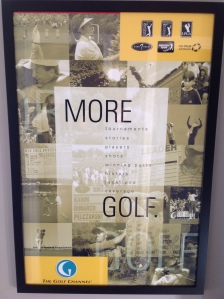
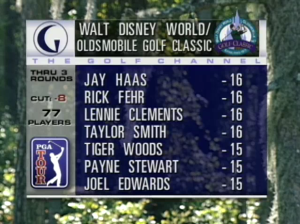
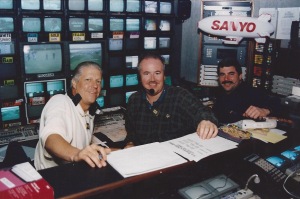

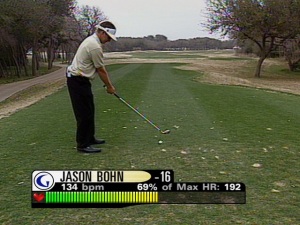
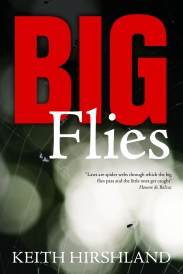
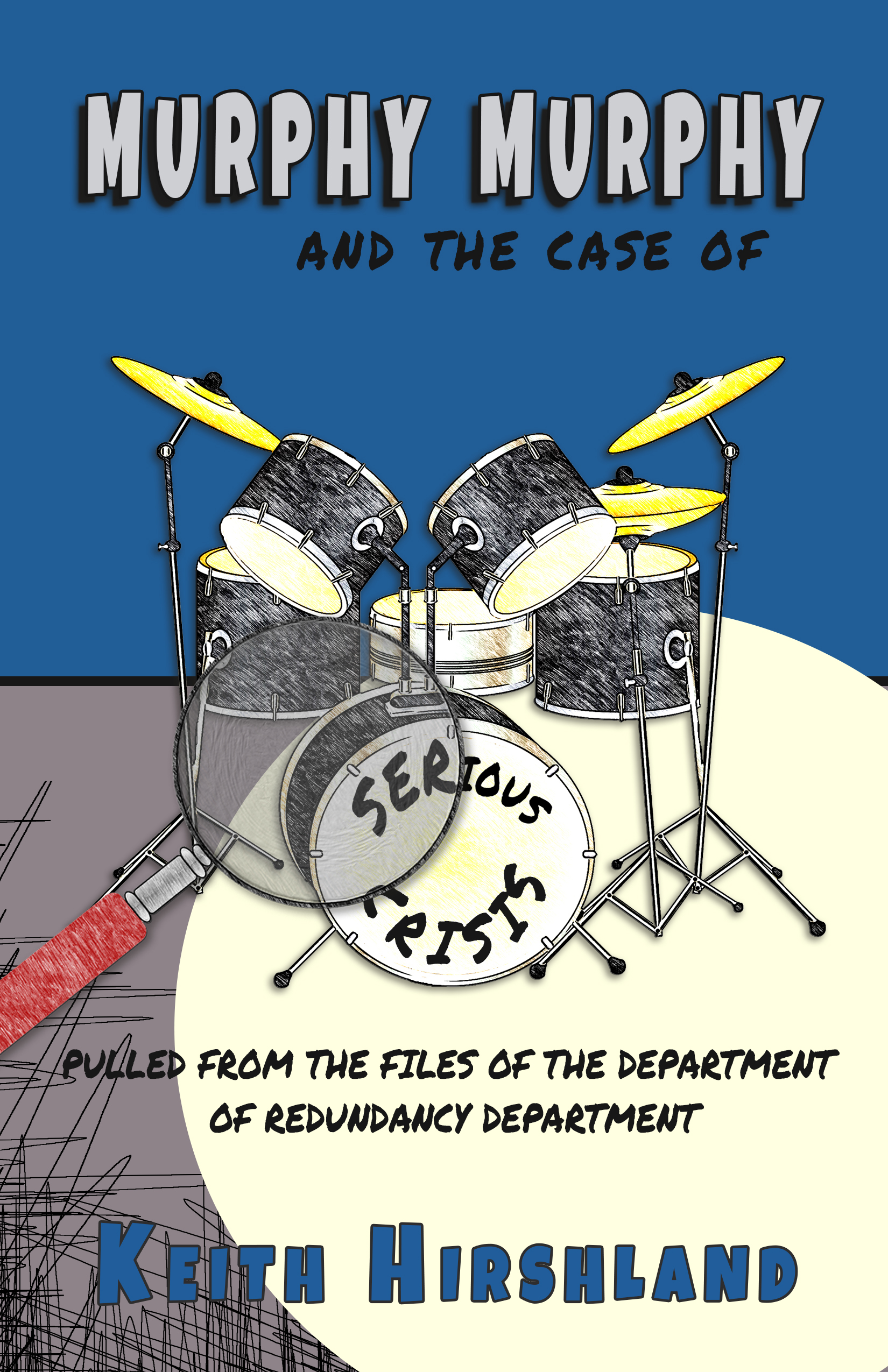

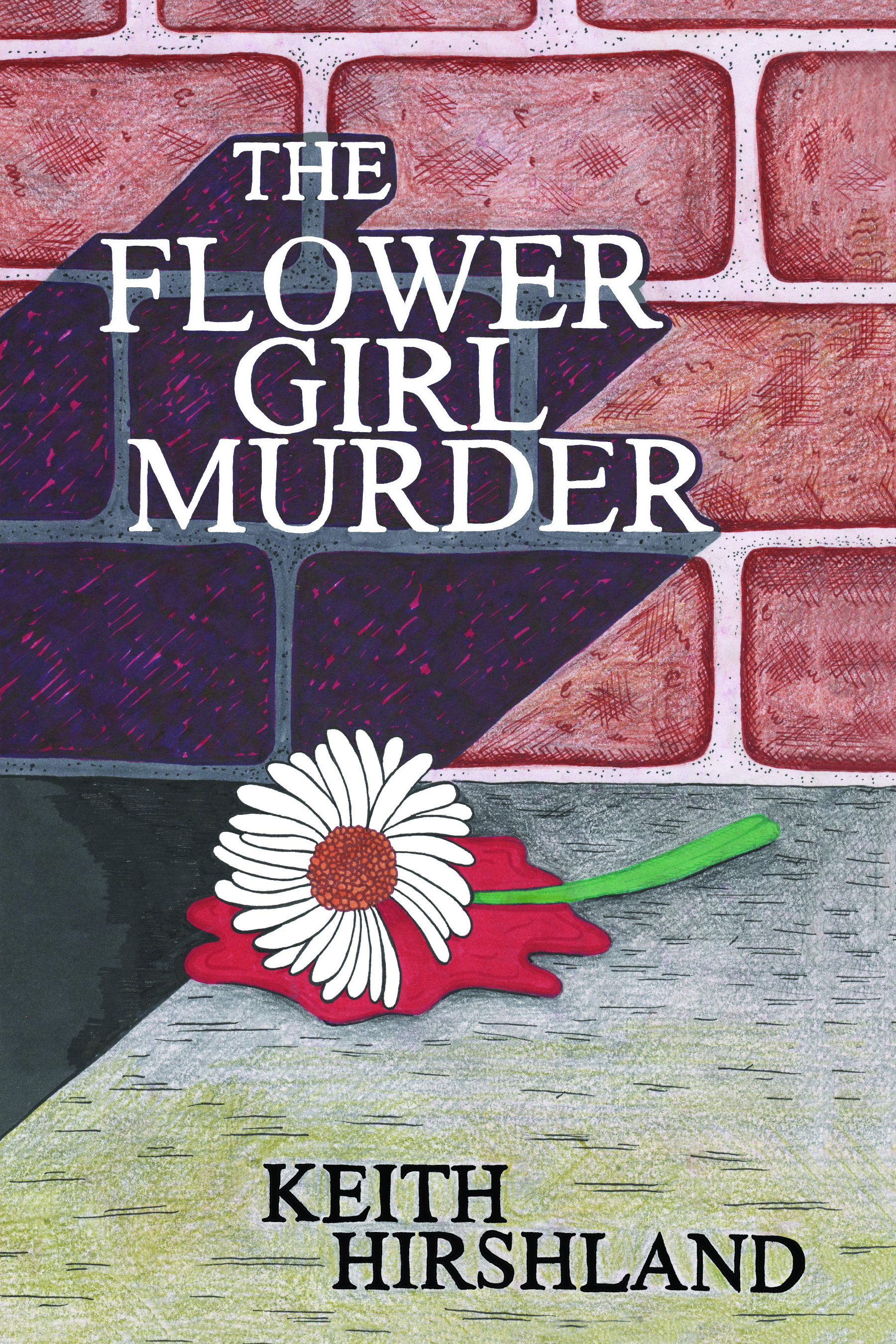
1997 Arnie’s gala at Laurel Valley. The match was tied after 18 holes. Lehman and Love won in a chip off. Tiger missed an eagle putt on 18 that was 10-15 feet. His caddie was from the club, a very good player and longtime caddie at Laurel, and he had the right read. Tiger never asked for a read all day and misread the eagle putt.
LikeLike
Thanks for adding to the memory Jim. It as a great day and a great day for The Golf Channel.
LikeLike